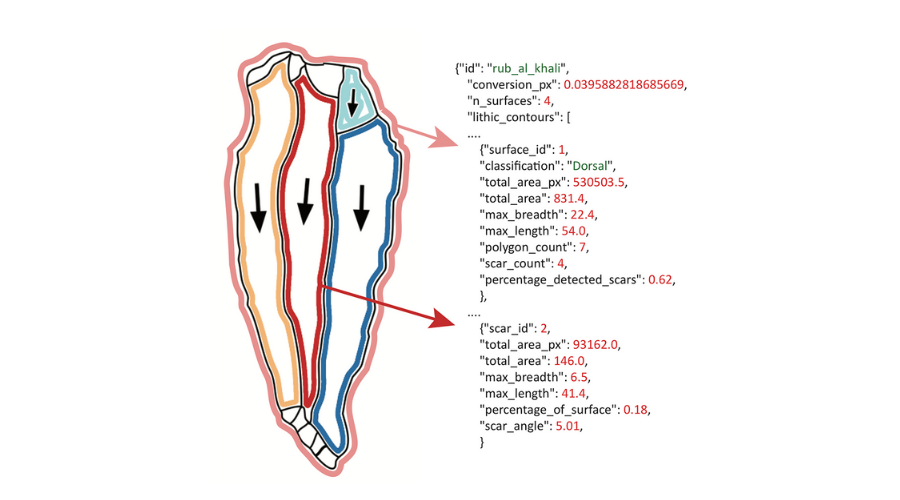

Archaeologists and anthropologists have long used stone tools (lithics) to reconstruct the behaviour of prehistoric hominins, but accurately measuring such artefacts is difficult and time-consuming.
Although 2D illustrations can visually capture a lot of useful information about an artefact – such as flake scar size, crucial in understanding the manufacturing process – these data are often under-utilised and difficult to collate.
PyLithics, a new Python software package developed by researchers at the Department of Archaeology, University of Cambridge and The Alan Turing Institute, seeks to alleviate these issues by accurately identifying, outlining and computing lithic shape and linear measurements and creating user-ready data.
Lead author, Dr Jason Gellis of the Department of Archaeology, University of Cambridge and The Alan Turing Institute, said, “The goal of PyLithics is to enhance the size and quality of lithic databases for analysing ancient technology and human behaviour. Where a trained archaeologist can complete an analysis of a single stone tool in 25-35 minutes, PyLithics will capture and analyse data approximately 1000 times more quickly and run 24/7. Thus, in a week PyLithics could capture and process as much data as a full-time specialist could accumulate in a decade.”
Senior author, Professor Rob Foley, also of the University of Cambridge and The Alan Turing Institute, said, “Evolutionary biology, and the study of human evolution in particular, has been transformed by the impact of genomics and the development of ancient DNA methodologies. One of the reasons that genomics has had such an impact is the sheer scale of the data now available, and power of the analytical techniques used.
In comparison, lithic data is complex and erratically quantified patterns of metrics, counts, shapes, categories, verbal descriptions, photos, and drawings. Problematically, these data are scattered in diverse forms and literatures, sometime stretching back a hundred years or more. In practice, there is a wealth of data, much of it unused, potentially providing key information about the past. We developed PyLithics to transform and systematise raw archived data to an analysable database that can be applied widely to modern human evolution relevant data.”
Commenting on further developments, Dr Gellis said, “PyLithics is the first of its kind. There is currently no other software for lithic illustration feature identification, extraction and analysis. V1.0.2 is currently under development and will include several new features. Eventually, we would like for the software to work with 3D models/photogrammetry.
PyLithics is open-source free for use software, and we invite users to contribute through the PyLithics GitHub Repository. Users are also able to fork the software and develop it for their own unique research projects.”
The research is published in the Journal of Open Source Software and the software package is available on Zenodo.
The authors would like to thank The Alan Turing Institute and the University of Cambridge for funding and support.
--
Gellis et al., (2022). PyLithics: A Python package for stone tool analysis. Journal of Open Source Software, 7(69), 3738, https://doi.org/10.21105/joss.03738


